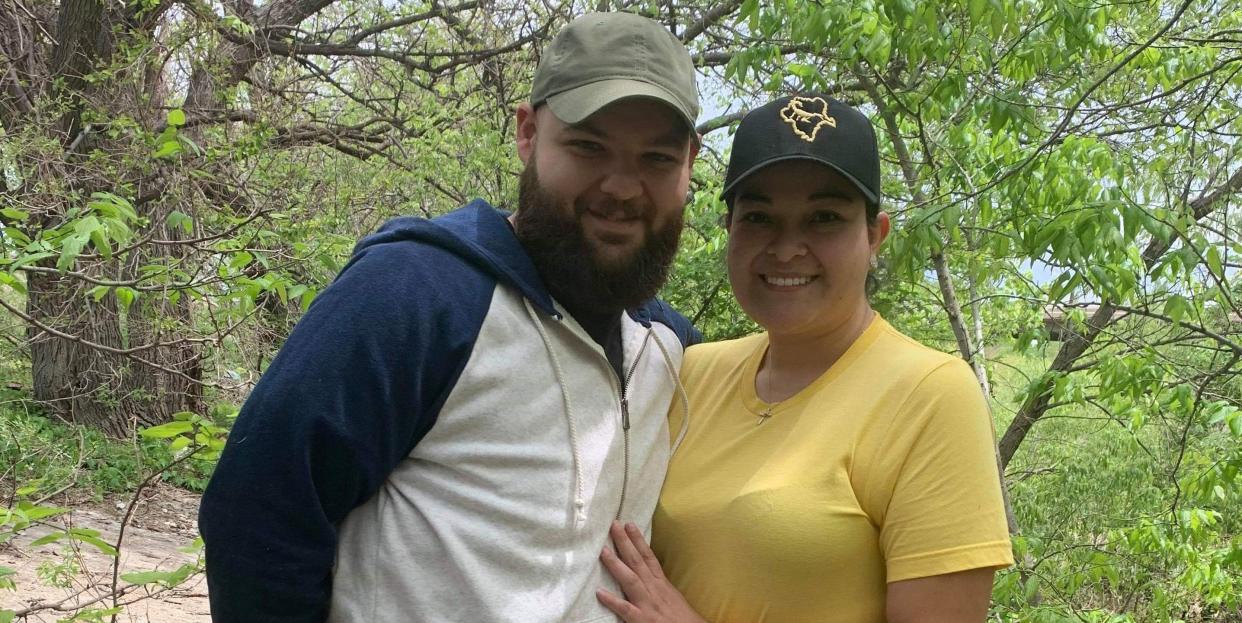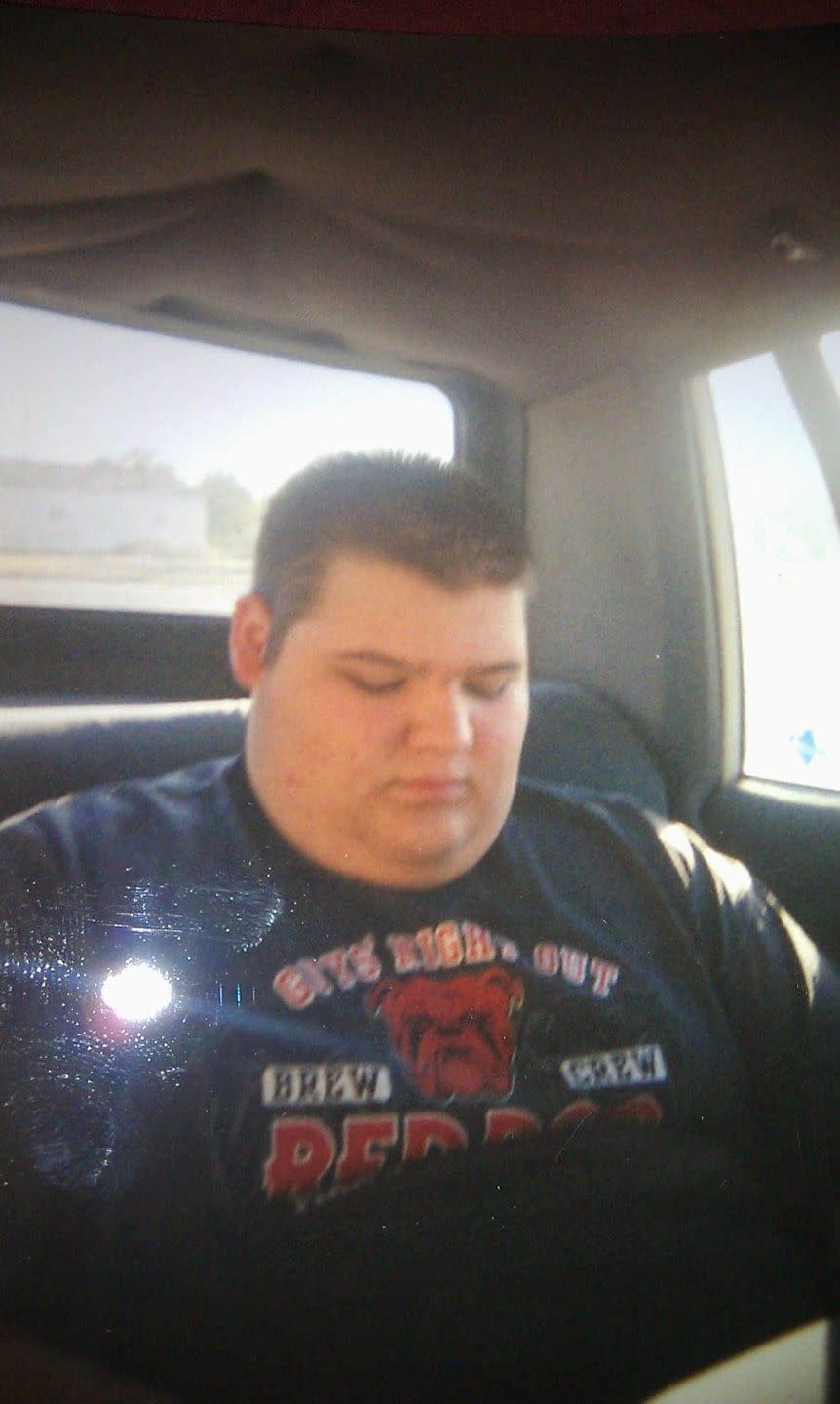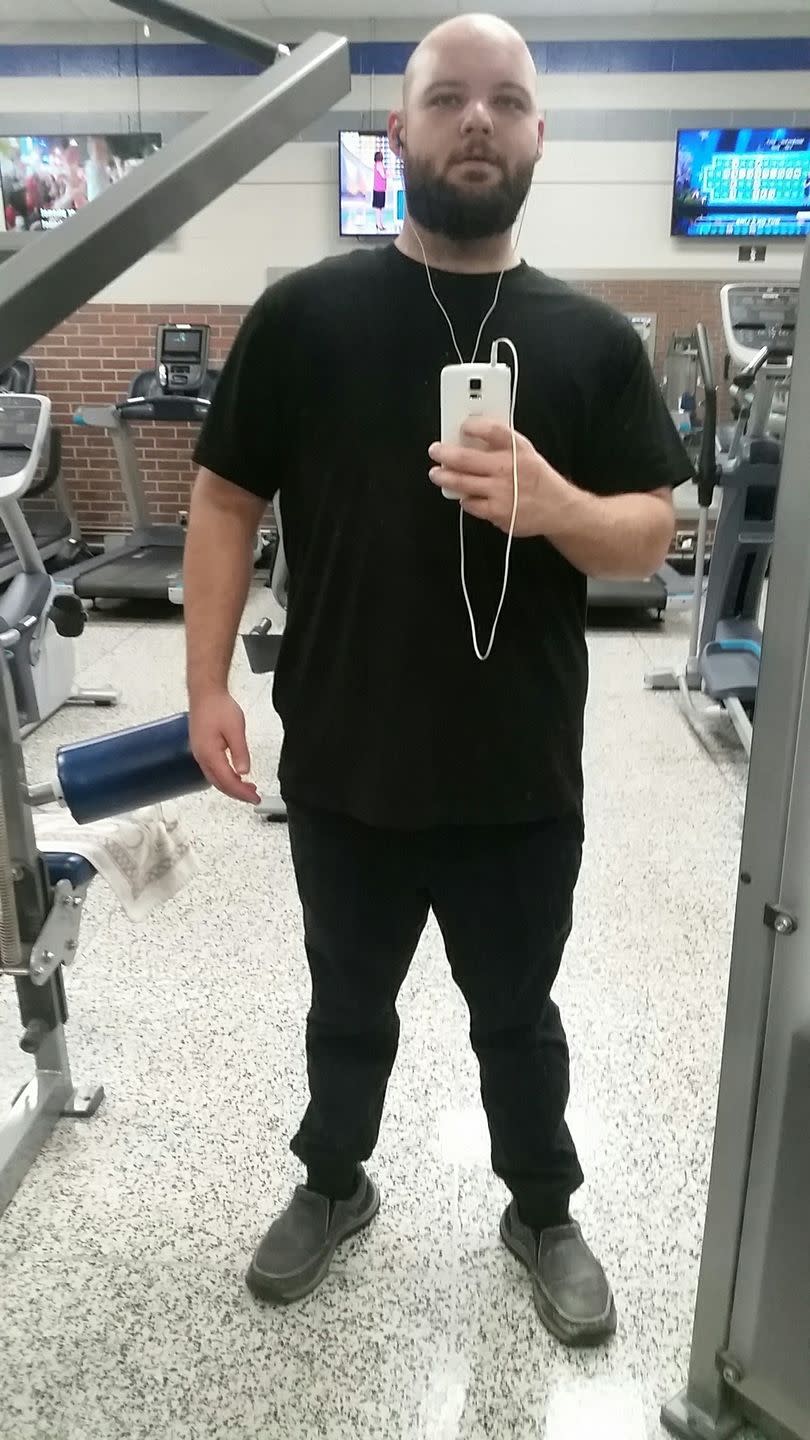How I Stopped Living in Fear of my Rare Skin Condition Flaring Up

Late one night in 2015, Adam Hatten was doing what he often did in those days: mining the depths of the internet for clues as to what was behind the mysterious skin condition he had lived with since he was a teenager.
At 27, Hatten, an elementary school teacher in Great Bend, Kansas, had accepted the golf ball-size cysts that clustered along the back of his neck and under his arms as a fact of life. When you weigh 300-plus pounds, he figured, it’s normal for cysts to develop within the skin folds. Living with them, however, was far from anyone’s normal day-to-day.
As a teenager, Hatten would sometimes cover the cysts with duct tape. Over time, he embraced a more practical approach, wearing multiple layers to hide stains from ruptured cysts. “I had to take three showers a day just to wash away the blood,” he recalls.
On that night in 2015, Hatten happened across a Reddit thread that caught his attention. A woman with a chronic skin condition that sounded a lot like Hatten’s described how she tamed it by giving up nightshades—a family of plants that includes foods and spices such as tomatoes, potatoes, eggplant, bell peppers, cayenne and paprika, all of which contain chemical compounds called alkaloids. The woman had hidradenitis suppurativa (HS, for short), an extremely painful condition in which skin lesions develop as a result of inflammation and infected sweat glands. They usually occur in places where skin rubs together, such as in the armpits, groin, and buttocks.
Hatten promptly made an appointment with his primary care doctor who confirmed his suspicions. “Right off the bat, he told me I had Stage 3 HS, the worst he’d ever seen,” says Hatten. He recalls an unsettling mix of fear and relief upon finally being diagnosed. The chronic condition he’d battled for 14 years finally had a name—but it also had no cure.

His doctor prescribed antibiotics and referred him to a dermatologist. The drugs worked for a few months, but then the cysts returned with a vengeance. Recalling the Reddit post, Hatten tried eliminating nightshades from his diet. By the time he met with the dermatologist six weeks later, his symptoms had improved dramatically. “I was at the absolute best I had been in all my adult life,” he says.
Giving up nightshades was only part of the solution. Soon after, Hatten discovered the AIP diet (short, for autoimmune protocol), a subset of the Paleo Diet that’s been shown to improve symptoms in some people with inflammatory bowel disorders like Crohn’s and ulcerative colitis. People on AIP eliminate food groups that might contribute to inflammation, then slowly add them back in to determine which ones trigger flare-ups.
“The AIP diet is simple but not always easy because it requires the elimination of foods we are all used to eating daily: grains, nightshades, refined sugar, alcohol, legumes, nuts, seeds, and artificial ingredients,” says Hatten. Two weeks in, though, he saw a dramatic change in the number and size of cysts. “People say, ‘Going from the standard American diet you would’ve seen huge results no matter what diet you chose,’ but it’s not true,” he says. “I did Paleo for a year and saw little results.”

Now, five years later, Hatten has maintained a 150-pound weight loss and, as long as he follows AIP, he says he has no symptoms of HS. “I can do things physically without pain like walking, even joining a gym.”
And for the first time in his life he doesn’t see himself as “too grotesque for anyone to love,” he says. “I found someone special who understands me, someone I believe would’ve accepted me even before. My girlfriend doesn’t even mind my ‘crazy’ diet.”
You Might Also Like

